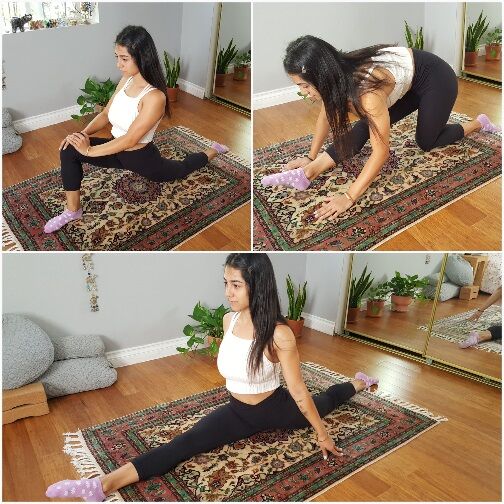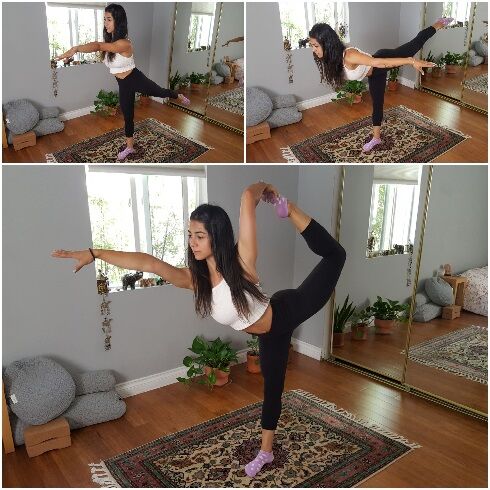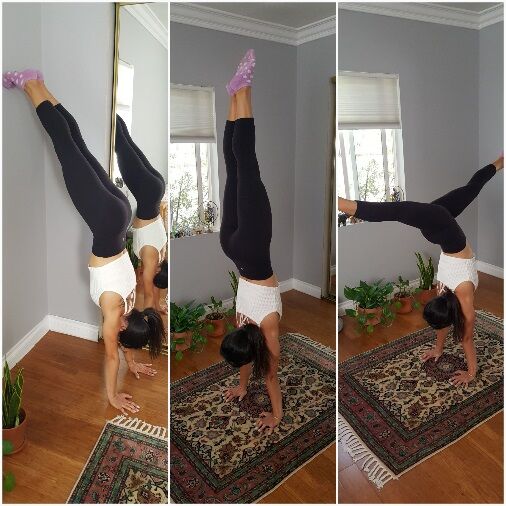Awesome Acrobatics Exercises 101: Beginner to Advanced
Have you ever wondered how to flip, fly, and amaze a crowd like a world-class acrobat? If yes, you are in the right place! Despite common misconceptions, the acrobat’s skills can be mastered by virtually anyone -- with the proper instruction and know-how of some fundamental acrobatic exercises. With the right circumstance, you can learn to practice acrobatic moves, maybe even from your own home. Check first with your health care practitioner that you are in optimal health before you begin. Without further ado, let's get started.
Creating a Safe Space for Your Acrobatics Practice
Before starting out, make sure you have ample room to safely execute your moves. If you are working in a gym, be sure you won’t run into anyone.
- Choosing the Right Location: Ideally, choose a space with a high ceiling and a soft, level surface. If working indoors, ensure there's enough clearance from light fixtures and furniture. Outdoors can be great if conditions are suitable.
- Clearing the Area: Remove any hazards like furniture with sharp corners, loose rugs, or objects you could trip over.
- Essential Equipment: Invest in good quality mats, especially for tumbling. The thicker the mat, the better the cushioning.
- Importance of a Spotter: For certain skills, especially at the intermediate and advanced levels, having a trained spotter is crucial. A spotter can assist you, correct your form, and help prevent injuries. If practicing at home, make sure you have someone with you.
The Importance of Warming Up
The warm-up is central to any exercise practice, and it's especially crucial for acrobatics. Start with some jumping jacks or running in place to raise the heart rate and activate the circulation. When your body is warm, stretch the major muscle groups and mobilize the joints. "A thorough warm-up is essential for injury prevention in acrobatics. It prepares the muscles and joints for the demands of the activity," says certified Acrobatic Arts instructor, Sarah Miller.
- Why Warm-up is Crucial for Acrobatics:
- Injury Prevention: Prepares muscles and joints for activity.
- Muscle Activation: "Wakes up" the muscles you'll be using.
- Increased Blood Flow: Delivers oxygen and nutrients to muscles.
- Sample Warm-up Routine:
Exercise Time/Repetitions Jumping Jacks 30 seconds High Knees 30 seconds Butt Kicks 30 seconds Arm Circles 10 forward, 10 backward Leg Swings 10 each leg (forward, backward, side) Torso Twists 10 each side Wrist Circles 10 each direction Ankle Circles 10 each direction
Beginner Level Acrobatics Exercises
Here are some great exercises for those just starting with acrobatics.
Flexibility and Mobility

- Pike: Sit on the floor with both legs extended in front of you. Extend your arms above your head and sit up as tall as you can. Keeping your core engaged and your back flat, slowly hinge forward from your hips to fold over your legs as much as you can while reaching toward your feet with both hands.
- Common Mistakes: Rounding the back, forcing the stretch.
- Modifications: Bend your knees slightly if you have tight hamstrings.
- Splits: To start, first get into a lunge position with your back knee on the floor. Gently press your hips forward to open your hip flexors. Next, press your hips back to straighten your front leg. Hold this position for 30 seconds to stretch your hamstring then slowly slide your front leg forward while keeping your hips squared off. Only go as far as your body allows you to go. As time goes on, your body will allow itself to get lower into a full split position. It takes time and practice.
- Common Mistakes: Forcing the split, not keeping hips square.
- Modifications: Use yoga blocks under your hands for support.
- Straddle/Pancake:
 Sit on the floor in an open straddle position with straight legs. The more flexible you are, the wider your legs will be. While keeping your back as straight as possible slowly reach forward to bring your body as close to the floor as you can.
Sit on the floor in an open straddle position with straight legs. The more flexible you are, the wider your legs will be. While keeping your back as straight as possible slowly reach forward to bring your body as close to the floor as you can.
- Common Mistakes: Rounding the back, bouncing in the stretch.
- Modifications: Sit on a folded blanket to elevate your hips.
- Shoulder Flexibility Exercises: Shoulder stretches, arm reaches behind the back.
Core Strength and Stability
- Plank: Assume a push-up position with forearms on the ground, elbows under shoulders. Maintain a straight line from head to heels.
- Common Mistakes: Sagging hips, raising the butt too high.
- Modifications: Perform on your knees.
- Hollow Body Hold: Lie on your back, lift your legs and shoulders off the ground, arms extended overhead. Maintain a "hollow" shape.
- Common Mistakes: Arching the lower back, lifting head too high.
- Modifications: Bend your knees.
- Tuck Jump: Begin standing, jumping as high as possible, and hugging the knees to the chest mid-air. These are excellent conditioning exercises for the legs and the core. No equipment needed!
- Common Mistakes: Not engaging core, landing with stiff legs.
- Modifications: Start with smaller jumps and gradually increase height.
Basic Tumbling
- Forward Roll: Also known as a somersault, this familiar move is a simple forward rotation on the floor, with the feet traveling over the head. Be sure to tuck the neck as you roll and try to keep the body as compact as possible.
- Common Mistakes: Not tucking the chin, rolling sideways.
- Progressions: Start on an incline mat to make the roll easier.
- Backward Roll: Start in a standing position with both arms extended above your head. Bend both of your knees and bring your hands to your ears with your palms up and elbows forward. Push back onto your butt and back while keeping your knees in tucked position and your chin down. As your hands touch the floor, push off your head and onto your feet into a standing position with your arms extended above your head.
- Common Mistakes: Not pushing through the hands, not keeping the body tucked.
- Progressions: Practice on an incline mat.
- Cartwheel: This is a basic acrobatic skill to master early in your training. Start standing, orienting your body to profile. With a little bit of momentum, put one hand to the floor in front of you at a time, while kicking the back leg up and over to bring you all the way around and back to your feet.
- Common Mistakes: Not pushing off the supporting leg, bending the arms.
- Progressions: Practice with a spotter or against a wall.
Intermediate Level Acrobatics Exercises
Once you've mastered the basics, you can move on to more challenging exercises.
Handstand Development
- Wall Handstand: Kick up into a handstand position against a wall, with your back to the wall. Focus on maintaining a straight line from your hands to your feet.
- Common Mistakes: Arching the back, looking at the hands.
- Progressions: Hold for increasing durations. Try to slowly move your feet away from the wall while maintaining balance.
- Freestanding Handstand Practice: Once you are comfortable with a wall handstand, start practicing freestanding handstands. Spotter is highly recommended. Read full detail here.
- Tips for Balance: Engage your core, squeeze your glutes, and focus your gaze on a point on the floor.
Building on Tumbling
- Round Off: This move is similar to a cartwheel, but you will land on two feet standing together instead of apart. Dive towards the floor with hands turned ninety degrees to the side. Spring off of them and twist your body to align with your hands and land on both feet together.
- Common Mistakes: Not bringing the legs together, not snapping down.
- Progressions: Practice with a spotter.
- Handstand Forward Roll: From a handstand position, slowly lower yourself forward, tucking your chin and rolling onto your upper back.
- Common Mistakes: Not controlling the descent, not tucking the chin.
- Progressions: Practice against a wall.
Introduction to Partner Acrobatics
- Basic Lifts and Holds: If you have a qualified partner, you can start practicing basic lifts and holds, such as a thigh stand or a two-high.
- Safety Considerations: Always use a spotter and ensure both partners are comfortable and communicate effectively.
Advanced Level Acrobatics Exercises
These exercises require significant strength, flexibility, and control. It's highly recommended to work with a qualified coach when attempting advanced skills.
Dynamic Flexibility
- Needle/Scorpion:
 This involves a high level of back and leg flexibility. You will need to be able to do splits and have good balance.
This involves a high level of back and leg flexibility. You will need to be able to do splits and have good balance.
- Common Mistakes: Forcing the stretch, losing balance.
- Prerequisites: Splits, backbends, arabesque/scale.
Advanced Tumbling
- Front and Back Hand Spring: Start standing with arms by your ears. Dive into the floor with two hands. You will move through a handstand position as your legs move toward the floor in a backbend. Spring back up from your hands and land on two feet. For the back handspring, reverse the steps.
- Common Mistakes: Not generating enough power, arching the back.
- Prerequisites: Strong handstand, round-off, backbend.
- Front and Back Flips: Get comfortable with your somersault and your backbend to prepare for your basic flips. The hands will lead the way to the floor, with the feet following as your body turns in the air. Once you master your acrobatic flips, you will likely find any excuse to show them off.
- Common Mistakes: Not setting properly, not staying tight during the rotation.
- Prerequisites: Strong handsprings, excellent body awareness.
Aerial Arts Preparation
While aerial arts can be accessible to all levels, they do require some preparation with a focus on strength-building.
- Pull-ups: Work on different grip variations (wide, narrow, chin-up).
- Common Mistakes: Using momentum instead of strength, not engaging the back muscles.
- Modifications: Use resistance bands for assistance.
- Push-ups: Focus on proper form, with a straight line from head to heels.
- Common Mistakes: Sagging hips, flaring elbows.
- Modifications: Perform on your knees.
- Core exercises for inversions: Hanging leg raises, L-sits.
- When you’re strong enough, you can explore the many apparatuses available, such as aerial silks, Lyra or aerial hoop, and aerial straps.
Horse Stance: This strengthening move is a preparation for high jumps and comes from the martial arts. Taking a wide stance with your feet, bend the knees and lower the upper body into a low lunge position, knees aligned over the toes. Hold for 60 seconds and repeat. Take the hands in an extended flexed position for an added challenge. Avoid resting your hands on the thighs.
Partner Acrobatics: Add an extra element to your acrobatic exercises by working with one or more partners. There are many forms and traditions including hand-to-hand work, dance lifts, and acrobatic yoga. These are just a few styles to explore. Working with others brings a new challenge and new fun to the table.
The Importance of a Cool-Down
- Static Stretching: Hold each stretch for 30 seconds. Focus on major muscle groups used during your training, such as hamstrings, quads, hip flexors, back, shoulders, and wrists.
- Foam Rolling (optional): Can help release muscle tension and improve flexibility.
Training Frequency and Progression
- How Often to Practice: Aim for 2-3 sessions per week, allowing for rest days in between.
- Listening to Your Body: Pay attention to your body's signals and rest when needed. Don't push through pain.
- Gradual Progression: Don't try to advance too quickly. Master each skill before moving on to the next. "Progress in acrobatics is built on a solid foundation of basic skills. Rushing the process can lead to injury and frustration," advises coach Michael Johnson, a 30-year veteran acrobatics coach.
Benefits of Acrobatics Training
Long considered the exclusive realm of circus performers, elite athletes, and martial arts masters, acrobatic exercises can be learned and perfected by anyone. Even perceived limitations do not have to bar against this pursuit, with people such as Jen Bricker and Pitu Blazquez paving the way for new generations. But you don’t have to strive to be an acrobat to practice these acrobatic exercises. Building strength, confidence, and fun, these moves can create a more engaging workout experience. Everyone needs movement in their lives, why not experience the most creative movement of all with acrobatics?
- Physical Benefits:
- Increased strength, especially in the core, shoulders, and legs.
- Improved flexibility and range of motion.
- Enhanced coordination and balance.
- Mental Benefits:
- Improved focus and concentration.
- Increased body awareness and spatial reasoning.
- Stress relief and improved mood.
- Creative Expression: Acrobatics allows for artistic expression through movement.
Troubleshooting Common Challenges
- Lack of Flexibility: Consistent stretching is key. Incorporate both dynamic and static stretching into your routine.
- Fear of Inversions: Start with wall handstands and gradually build your confidence. A spotter can also be helpful.
- Difficulty with Balance: Practice balance exercises like single-leg stands and arabesques.
Conclusion
Acrobatics is a rewarding discipline that offers a unique blend of physical and mental challenges. With dedication, patience, and proper training, you can master these awesome acrobatic exercises and experience the thrill of defying gravity. Remember to prioritize safety, listen to your body, and celebrate your progress along the way!
Final CTA:
Ready to take your acrobatics journey to the next level? Find a qualified acrobatics instructor near you to help you reach your full potential! Click here!
FAQs
How can I learn acrobatics safely at home?
Create a safe space, warm up properly, start with basic skills, use mats, and consider having a spotter for more advanced skills.
What are the best beginner acrobatics exercises?
Forward rolls, backward rolls, cartwheels, pike stretch, straddle stretch, plank, and hollow body hold are great starting points.
How long does it take to learn a handstand?
It varies from person to person. Consistent practice is key. It can take weeks or even months to achieve a solid freestanding handstand.
What equipment do I need for acrobatics at home?
Mats are essential for safety. Yoga blocks and resistance bands can also be helpful.
I'm not strong/flexible enough, can I still do acrobatics?
Yes! Acrobatics training will help you build strength and flexibility over time. Start with modifications and progress gradually.
What are the best conditioning exercises for acrobatics?
Plank, hollow body hold, tuck jumps, push-ups, pull-ups, and various core exercises are excellent for conditioning.
How do I improve my balance for acrobatics?
Practice single-leg stands, arabesques, and other balance exercises. Also, work on strengthening your core.